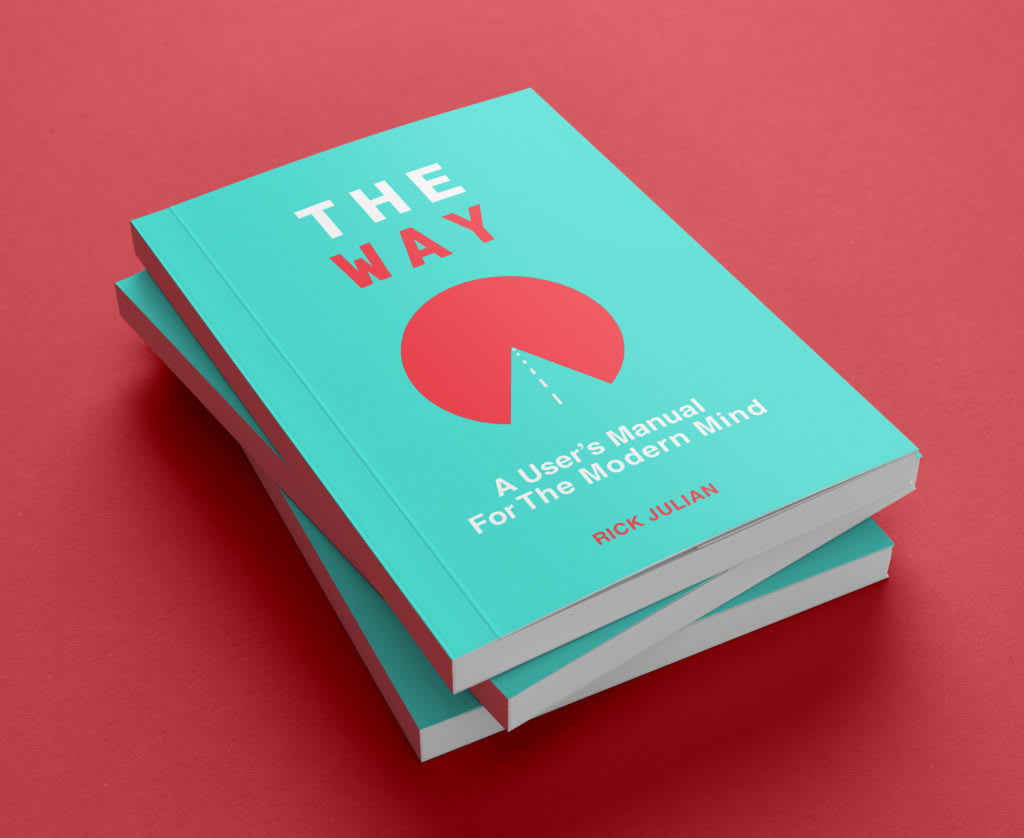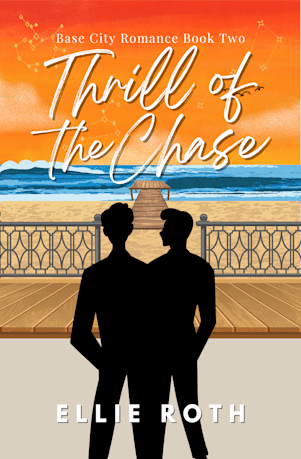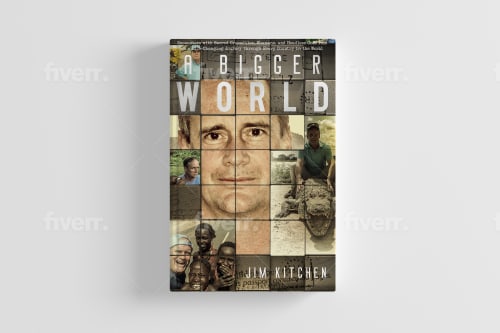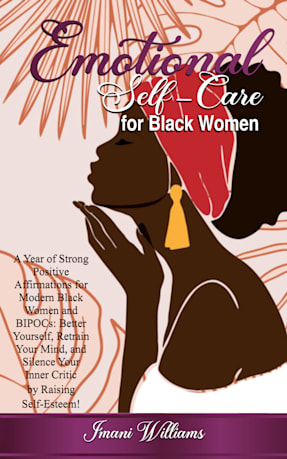15 Book Cover Design Ideas to Grab Readers’ Attention in 2024
"Don't judge a book by its cover," but when it comes to selling books, that's exactly what your readers will do. Here are 15 book cover ideas to inspire you.
 November 10, 2022
November 10, 2022 12 minute reading
12 minute reading
The old saying goes, "Don't judge a book by its cover," but when it comes to selling books, that's exactly what potential readers will do. Your book cover is often the first—and sometimes only—thing that potential readers will see, incorporating essential design elements such as cover art and typography.
Book covers give readers a glimpse into your story. It’s a shortcut that helps them determine if they like your work and if they can trust you with their valuable reading time. Book covers are the critical element that sells your book, and it's essential to ensure that your cover is professional, eye-catching, and reflective of the book’s contents.
15 Best Book Cover Ideas for Inspiration
When looking for book cover design inspiration, start with the bestselling books within your genre. Readers have specific expectations for book cover designs, and most genres already have a formula guaranteed to work. But don’t be afraid to experiment with other unconventional book cover ideas to stand out from the competition.
Find Book Cover Design Services by Freelance Graphic Designers
1. Minimalism
Minimalist design is always popular because it conveys the book’s main point elegantly and profoundly. The clever use of whitespace helps the book stand out from cluttered book cover designs. Minimalist book cover design can be used in a broad genre of books, from non-fiction business books to sassy fiction books.

Minimalist Book Cover Art by nskvsky

Katrina (nskvsky) is an expert cover art designer on Fiverr, check out her gigs or request a custom offer for your design.
Contact KatrinaFamous Examples of Minimalism
Timur Vermes’ Look Who’s Back isn’t afraid to stand out with lots of whitespaces and a clever illustration that hints at what the book is about. Darrell Williams’ In Pursuit of Grit uses a compelling image and clean typography to convey the book’s message.
2. Clever Typography
If you have a clever title, you can turn it into a powerful typography that conveys an image related to the title and the book’s contents. Typography can be intertwining text, big and bold fonts, or carefully organized fonts that create stunning imagery and includes both the book and author's name. The clever use of colors can also enhance the typography’s visual look.

Hand-drawn book cover illustration of a female character. Made by mitxeran
Famous Examples of Clever Typography
Karan Mahajan’s The Association of Small Bombs drives the book’s point by representing the spaces of the vowels as connected bombs. Eric Wilson’s Against Happiness uses clever typography and whitespace to communicate the book’s purpose.
3. Silhouettes
Silhouettes are ubiquitous book covers because they grab readers’ attention. A talented designer can create a unique take on this popular trend to make your book stand out.

Silhouette book cover design by jjkjeky
Famous Examples of Clever Silhouettes
Han Kang’s The Vegetarian uses a classic silhouette that lends the novel a mysterious aura and gives the reader a glimpse of what to expect. Kiran Millwood Hargrave’s The Girl of Ink & Stars combines silhouette, contrasting colors, and handwritten font to grab attention and convey the book’s mood.
4. Real Photos
Real-life photos aren’t only used for biographies. They can become attention-grabbing cover art depending on how they’re treated.

A book cover design featuring a real photo by rebecacovers
The artistic treatment of a man’s photo captures your attention and draws your eyes to the gripping tale of this book by J. Edward Gore. The same technique is used in the book cover design of HC Michael’s The Girl Who Never.
5. Hand Drawn Covers
Hand-illustrated covers scream originality and is versatile enough to work with any genre. A talented book cover designer can create these unique covers.

An illustrated book cover design by luisagalstyan
Famous Examples of Clever Hand Drawn Covers
The book cover for The Great Gatsby allows the Y to be used as a wineglass and convey what the protagonist goes through in the book. Joanne M. Harris’ Runemarks stands out with colorful and intricate hand illustrations.
7. Photo Collages
Recent innovations in photo manipulation give book cover designers the ability to create exciting photo collages that grabs attention and gives your book a modern look.

A Photo collage book cover design by davidcolonfilm
Famous Examples of Clever Hand Drawn Titles
The clever use of photo collages creates a unique look to Joshua Cohen’s book. This book design idea is possible with the creative use of photo editing software. Evie Wyld’s After the Fire, A Still Small Voice immerses the title with a collage of photo illustrations that capture the reader’s interest.
8. Big Bold Typography
You can’t go wrong with using big and bold fonts as a book cover design. It’s not a new trend, but it has remained successful, as evidenced by the number of books using this book cover idea throughout the years. This design screams at the reader to grab the book or miss something great. It instantly stands out in a sea of book thumbnails since bold colors are also used alongside bold text.
When using this book cover idea, you shouldn’t go for subtlety, as being loud is the aim of this design.

Big typography book cover design by printok
Famous Examples of Big Bold Typography
Ernest Cline’s Ready Player One instantly stands out with its contrasting colors and bold fonts. The Godfather by Mario Puzo remains a timeless classic with its bold fonts and contrasting colors that immediately grabs attention.
9. Interactive and Immersive Typography
This book cover idea integrates the title into the imagery or scenery depicted on the cover. Sometimes, it may involve obscuring parts of the title, but that’s typical of this cover design idea. Mystery and suspense books utilize this trend to help readers get a glimpse of the scenes in the book and pique their interest in the rest of the story.

Immersive typography book cover design by okomota
Famous Examples of Interactive and Immersive Typography
This cover interpretation of Erica Ferencik’s The River at Night already gives readers a sense of the thrill and suspense that reading the book will bring them. Rebecca Schiff’s The Bed Moved may be hard to read at first, but upon closer inspection, curious readers would see that the typography was used to tell the story.
10. Handwritten Typography
Seeing handwritten letters on a book cover design makes the book feel quirky and fun. It’s a popular trend for Young Adult fiction where readers expect to see lots of personality within the page.

Hand drawn typography book design by strike80
Famous examples of handwritten typography
John Green’s The Fault in our Stars instantly stands out with its handwritten typography that promises readers a warm and unique story. Rachel Cantor’s Good on Paper promises a contemporary and friendly read based on the handwritten title.
11. Double Exposure
Double exposure is a technique that uses a big picture as the backdrop and mixes it with the outline of a compelling image. The method can create surreal and frightful imagery, making them ideal for suspense, thriller, and horror books.

Double exposure design made by joeghaly
Famous double exposure examples
Patrick Logan’s One Wilde Night successfully conveys the gripping tale inside the pages with its suspenseful book cover. The same is true for L.T. Ryan’s End Game which combines double exposure with splashes of bold color.
12. Retro Look
Don’t be afraid to go back in time with retro looks, especially if your book took place in a specific period. Retro touches are making a comeback and can be interpreted in different book cover ideas.
Find retro style design gigs by freelance designer on Fiverr
Famous examples of retro look cover art
Stefanie Snider’s Little Games gives off a classic vibe that certain book lovers of this genre would find appealing. Kurt Schlichter’s Inferno uses classic illustrations reminiscent of the 1980s in this book set in that period.
13. Whimsical and Charming
If you’re writing a children’s book, it goes without saying that your book cover design must be whimsical and charming. Illustrations work best with children who will spot your book and ask their parents to buy it for them. It also conveys that the book is child-friendly.

A charming illustrated children book cover design by luisagalstyan
Famous examples of whimsical and charming book covers
Judith Kerr’s classic children’s book The Tiger Who Came to Tea conveys precisely what a kid would expect from the story. The Giving Tree by Shel Silverstein is another classic children’s book with a literal but charming cover.
14. Contrasting Colors
Contrasting colors are always helpful to add life and draw attention to a book cover. For dark thrillers, this is a time-tested technique that conveys gritty and suspenseful endings. If you’re writing a mystery book, stick with dark contrasting colors that set the tone for moody and dramatic stories.
15.Sizzling Images
Romance books follow a somewhat strict convention featuring sizzling scenes or handsome guys. But you can also experiment with tone and bright colors depending on the setting of your book. Contemporary romance might use more brilliant colors, while period romance usually involves darker tones.

A sizzling book cover designed by germancreative
Do-It-Yourself vs. Professional Book Cover Design
As an author, you want your book to look its best. After all, this is your chance to make a good impression, and your book sales depend on a fantastic book cover design. Both have pros and cons that you should carefully consider.
Designing Your Own Book Cover
It’s easy nowadays to create your own book design using tools like Canva and Photoshop. You may explore this route if you lack the resources to work with a professional designer. You know your book better than anyone else, which gives you a major advantage when designing a cover that accurately reflects the book’s content. It's also usually cheaper to create your own cover than to hire a professional.
However, book covers are harder to design than they seem. Creating an eye-catching and effective book cover takes more than slapping text and an image on a template. Also, your cover might not be as high quality as one designed by a professional.
Hiring A Professional Book Cover Designer
Authors now have several options for hiring professional book cover designers. You can expect to pay anywhere from $10 to $500 for a book cover design depending on the artist’s experience, the intricacies of your design, the time the project takes, and the options you want to choose from. Covers can also take an average of three weeks, depending on the designer and subsequent edits required from the initial output.
When you work with a book cover designer, you're guaranteed to end up with a high-quality, professional-looking book cover. A good designer can incorporate feedback and make changes until you're 100% happy with the final product. You also don't have to worry about any of the technical aspects of design, such as file types, sizing, etc.
It may be more expensive than designing your own cover but working with a professional is an investment that pays off. Professional book cover designers have developed the expertise to create an attention-grabbing book cover that generates sales.
Wrapping Up
Book covers are the first marketing tool any author needs to sell their work effectively. Creating eye-catching book cover designs may seem complicated, but with inspiration from conventional and trending book cover ideas, you can arrive at the cover design you want.
A professional book cover designer can help you achieve your vision and create an attention-grabbing cover. Secure the success of your hard work by investing in a professional book cover design.



